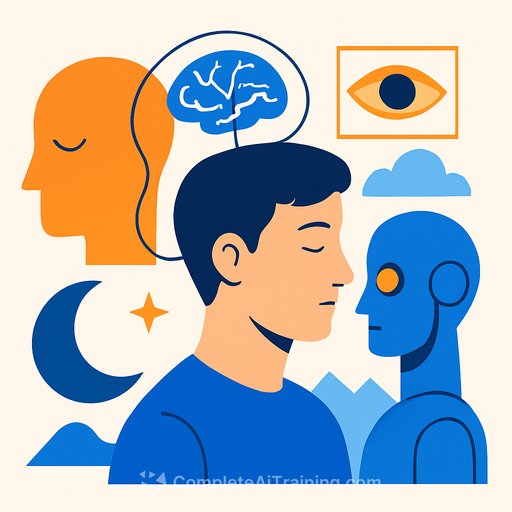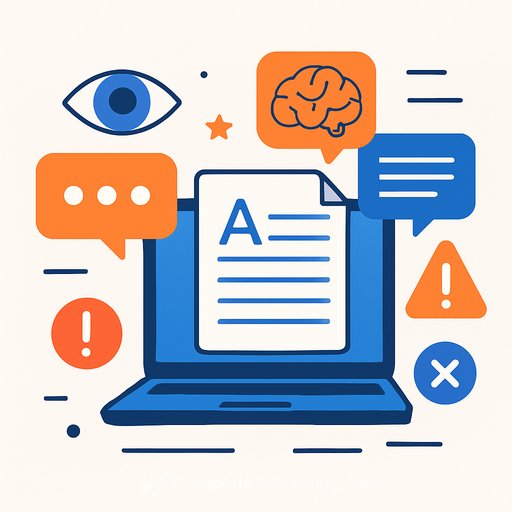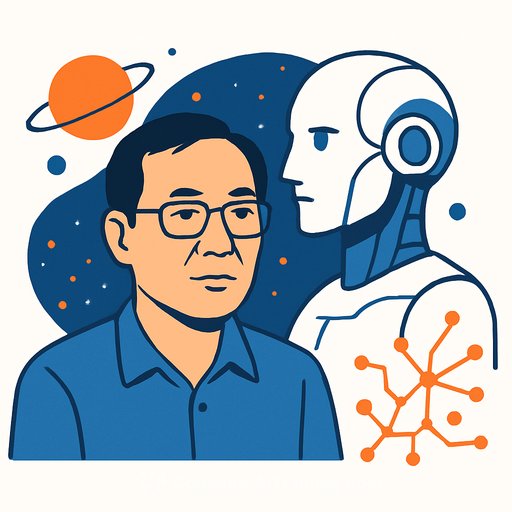AI, dreams, and myth: lessons for writers from Ken Liu's new thriller
AI is no longer a plot device. It's background noise. That's the setting of Ken Liu's All That We See Or Seem - a near-future where AI sits in every conversation, job, and relationship without calling attention to itself.
For writers, the book offers a clear brief: stop predicting. Start building myth. Use technology to expose human tension, not to explain it.
AI doesn't fix or doom us - it amplifies us
Liu frames AI as an amplifier. It makes life better in specific ways and worse in specific ways. That's a useful constraint for writing credible futures.
Practical lens: when you add a tool, ask: what does it make easier, harder, cheaper, and more tempting? Then push characters to their edge on each axis.
Write mythology of the future, not forecasts
Science fiction ages well when it gives readers symbols to think with. Liu points to Mary Shelley's creature as the archetype that still guides tech debates.
Today's parallel: a large language model "learning" by ingesting our literature echoes the creature reading Paradise Lost. Useful myth beats precise prediction every time.
Dreams as craft material
The novel introduces an "oneirofex" - a dream guide who uses AI to lead audiences into a shared dream. It fuses ancient practice (dreams as knowledge) with modern tooling.
That's a strong pattern for writers: invent professions that turn timeless human needs into new creative labor through tech.
Character: external threat vs. internal shadow
Julia Z, a famous hacker, faces hired muscle and data traps. She also faces herself. The next books deepen that internal conflict.
Plot accelerates when the antagonist outside triggers the antagonist inside. Keep both clocks ticking.
Action prompts for your next draft
- Write a scene where a character uses AI to kill time (chatting with an AI companion, summarizing a fight they don't want to think about). Make it casual, not spectacle.
- Give your setting one new art form. Define its audience ritual, economic model, and failure modes. Example: collective dreaming guided by mood-sensing models.
- Create an "amplification map" for your tech: 3 benefits, 3 harms, 3 moral temptations. Force your protagonist to pick one tradeoff per act.
- Draft a mythic metaphor for your core technology (e.g., "the library that learns you"). Reuse it across dialogue, setting details, and chapter titles.
- Stage a confrontation where your hero's tool solves the problem but worsens the consequence. Let them win the scene and lose a value.
Worldbuilding levers that read true
- Ambient AI: Treat assistants like weather - referenced, ignored, occasionally dangerous.
- Social friction: Who chats with AI partners openly? Who hides it? Show etiquette, shame, and status around synthetic intimacy.
- Creative labor: What does a live "dream show" offer that recorded media can't? Scarcity creates meaning.
- Law and code: Contracts, prompts, terms - all are spellwork. Let paperwork shape plot, not just action scenes.
- Collective myths: Name the shared stories people use to argue about tech. Characters quote myths when they make decisions.
Workflow: a repeatable loop for AI-aware fiction
- Seed myths: Pick 1 classic text and 1 modern meme your tech will echo.
- Amplification map: List gains, harms, temptations.
- New craft: Invent one profession (like the oneirofex). Sketch tools, risks, and culture.
- Shadow setup: Define the belief your hero would never betray. Write how their favorite tool tempts that betrayal.
- Three scenes: 1 quiet use of AI, 1 tactical use, 1 use with a moral bill due.
- Sensory check: Replace explanations with textures: device hums, prompt cadence, sleep-voice after a dream show.
- Debate beat: Two characters argue using different myths. No lectures, just choices.
Why this matters for writers
Readers don't need your forecast; they need a lens. Liu's approach treats tech as a mirror for human drives - ambition, fear, intimacy, meaning.
Build that mirror with clear tradeoffs, living rituals, and a myth your characters can fight over.
Tools for your practice
If you want structured reps with prompts and AI tooling for writing, explore these resources:
Write futures that feel lived-in. Let AI sit in the room, and let the myth do the heavy lifting.
Your membership also unlocks:






